You can trust Cyclingnews
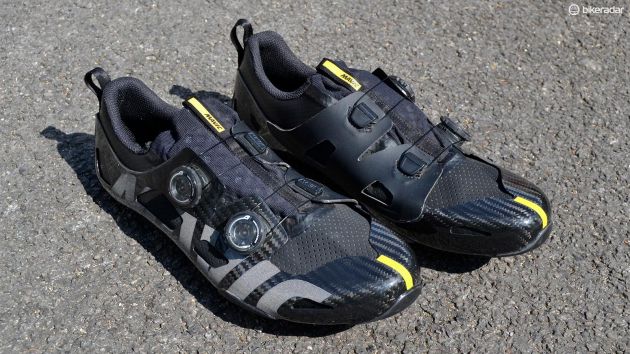
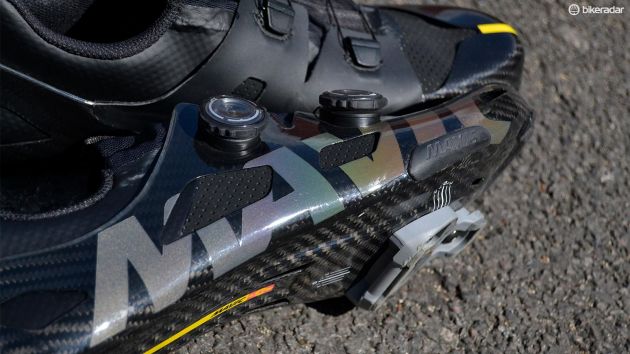
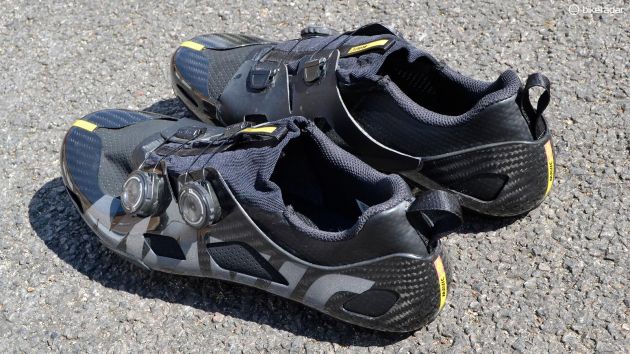
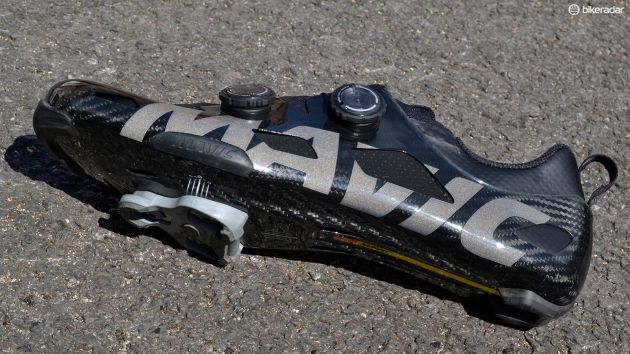
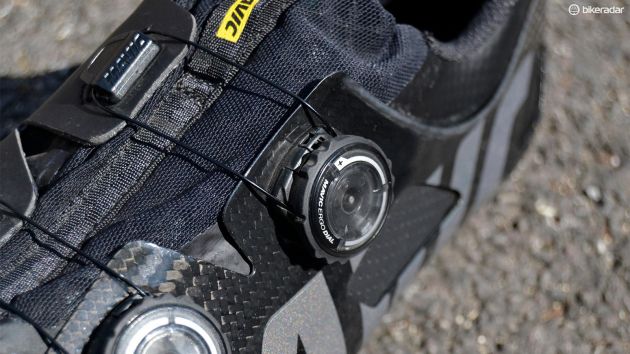
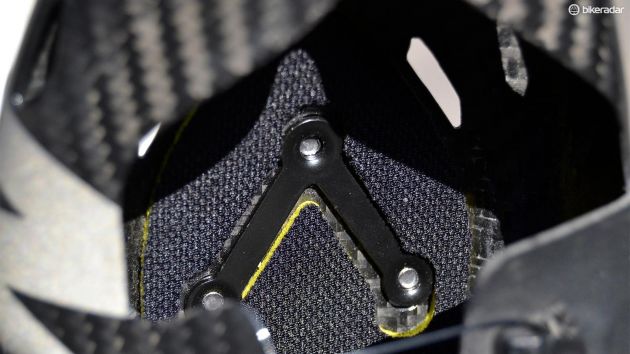
This article originally appeared on BikeRadar
The clue is in the name. The Mavic Comete Ultimate shoes are designed to be the ultimate performance cycling shoe. Value for money doesn't come into it. They cost what they have to cost in order to be what they are intended to be. And they cost a lot – €1000/$1000/£900. They're seriously good, but we'll get to that in a bit.
Mavic says it has been working on this shoe for three years, though the concept and early development work goes all the way back to 2011 and in total there have been some 200 iterations. They only broke cover last year, when professional rider Dan Martin was spotted wearing a pair at the Critérium du Dauphiné.
The Comete Ultimate has a separate frame and inner bootie. The frame is a carbon fibre exoskeleton that includes the sole and most of the upper as one piece, including the toe box and the mountings for the closure dials and cables.
The inner bootie provides the comfort. There's no floating tongue but it is cushioned. Two thicknesses of insole are included so you can tailor the volume. So far there is just one bootie but a winter version will be available in due course.
The holy grail
The goal was, in Mavic's words, to find "the holy grail in cycling footwear: a shoe that can transmit consistent power from rider to pedal on all 360° of the pedal rotation".
That sounds like an unusual target, given that the dead spot in the pedal rotation (cranks vertical) is a biomechanical issue. A number of brands have tried to address it with non-round chainrings but no one has ever thought the solution might lie in shoe design.
Things only get more confusing from there with some spurious sounding claimed benefits. Mavic says that in tests riders equipped with the Comete Ultimate produced up to 20W extra power in a ramp test; they say the shoes make you 15% more efficient; they say that 360º power transfer is "a game changer"; and they say that the carbon fibre construction of the Comete Ultimate "produces the same stiffness from the first kilometer to the last".
That last one is especially odd – do other carbon shoes fail to do this? We've never noticed deteriorating stiffness in a shoe over the course of a ride, or even over thousands of miles of use. Likewise, most good shoes offer plenty of upward support and heel hold to enable a smooth spin.
But there's more to these shoes, Mavic just isn't very clear in its marketing material about how these claims are achieved and how they join up.
We had the pleasure of a visit from Mavic ambassador Mike Cotty (he of the Col Collective videos) to explain the shoes in more detail, fit us with a pair and join us for our first ride.
Unboxing the Mavic Comete Ultimates
The Comete Ultimates come in a fancy travel case with individual soft shoe bags, a cleaning cloth, short cleat bolts and a set of specific overshoes sized to match.
The overshoes are claimed to be aero and water resistant – they have a DWR treatment and we found water beads off when we ran them under a tap. They fit the shoes well so they sit flat but the dials bulge through so we doubt they're as aero as a lace-up shoe with a tight cover.
The big logo on the side is reflective and also looks cool in sunlight, with metallic and purple shades like a hot titanium exhaust on a motorcycle.
The key design goals were a very low stack height and radically increased freedom of ankle movement, which together Mavic believed would unlock greater performance.
The stack height is just 4.5mm and the carbon sole is so thin beneath the inner bootie that there is no room for captive cleat inserts. Instead, you place a V-shaped insert into the carbon exoskeleton by hand and hold it there while turning in the first cleat bolt. The low cut around the ankle is even clearer to see.
Mike explained to us that in the R&D process Mavic used electrodes to test muscle activation versus power output and found that the Comete Ultimate enabled riders to produce a given power with 15% less muscle activation, giving rise to the efficiency claim.
Our test shoes weigh 256g each in size 45 with the inner bootie and the thinner of the two insole options. That's very good but not exceptional; it's on par with the likes of the Specialized S-Works 6 (248g each in 45) but above ultra-light shoes such as the Giro Empire SLX (203g each in 45 and soon to get lighter).
Mavic Comete Ultimate shoes: initial impressions
Well placed loops in front and behind the opening make the shoes really easy to pull on. They're fast to remove, too, the importance of which only dawns on you once you've lived with and ridden every day in a shoe that isn't, such as the above mentioned S-Works 6 that refuses to release your foot like a Rottweiler with its favourite toy.
The Comete Ultimates have ‘Smart Release' tabs for the laces – simply unwind the two-way dials half a turn and flick the end of the tab to pop it out of its guide. These tabs are one of my favourite features on the shoes and it's rather ironic that it's a part that costs about a penny and could be added to any other shoe in Mavic's range (and probably will be).
Clipping in for the first time, the shoes instantly feel different. The insole is comfortable with great support in the arch and from the metatarsal button. The space around your ankle is immediately noticeable, too; there's no contact with the upper at any point in the pedal stroke.
During sprint efforts the sole feels immensely stiff, up with the very best.
There's very strong upward support, too, though I'd say no more than other top race shoes, especially lace-up models. The low cut ankle and separate inner bootie made me wonder if heel hold would be a problem but it isn't - your heel stays firmly planted though this is achieved more by pinching your heel gently than by closing above it and around your Achilles like most shoes. If you have oddly shaped heels (is that a thing?) you should try these carefully before buying.
For my skinny, low volume feet the two insole options are a real blessing. I find some shoes even run out of closure capacity before my feet are securely held and this was almost the case with the standard insole. However, switching to the thicker insole achieved a perfect fit and avoided rucking the bootie by winding the cable laces right in.
The only compromise came in the toe box, which is relatively shallow. With the thicker insoles I found my big toe nails were touching the top of the shoe. It felt odd to start with but over subsequent rides I've stopped noticing it.
The dials have fine, two-way micro-adjustment to help you get the perfect tension but it's still initially tricky because you need less than you think and the gearing of the dials means you need very little twisting force, so it's easy to overtighten them and create an uncomfortable feeling.
On a recovery ride I experimented with very light tension and the shoes didn't feel sloppy – their shape does the work. In a tough 60-mile ‘drop chain gang' I backed them off two clicks all round from where I'd initially set them and found I had all the tension I needed, even when it came down to attacking for home at the end. I'd very happily road race with them.
Early verdict
After 300 miles at all intensities, I really like the Comete Ultimates, though it's actually quite hard to say why. In the key metrics of weight, stiffness and comfort they don't raise the bar over the likes of my favourite all-round shoes, the LG Course Airlite, and while they're more comfortable than the firm feeling Specialized S-Works 6 they're no lighter or stiffer, and nor can they claim the sleek aerodynamics of the low-profile Sub 6 version of that shoe.
Yet there is still something about these shoes that I really like. The efficiency benefits are very hard to test accurately without a lab. I plan to try using a power meter and will report back if the test proves repeatable.
Even so, I did always have a feeling of the power coming easily and with years of experience I'd like to think I've developed a good immunity to the placebo effect. I definitely think Mavic is on to something with their ankle freedom concept.
Does a shoe have to cost $1000 to achieve this? Of course not. No case can be made for these shoes representing any kind of value for money. But pushing the boundaries is an expensive occupation.
No one is suggesting that the new Bugatti Chiron isn't worth €2.5m – it's the ultimate and there are people who will pay for it. So it is with the Mavic Comete Ultimates, for now.
The good news for the 99% is that we can expect a rapid trickle down of many of the features on these shoes. If you're among the 1% and you like the look of these shoes, I promise you will not be disappointed by the performance.
Name: Comete Ultimate shoes
Built by: Mavic
Price: £900.00 / US $1,000 / AU$ N?A
Description: 256g each in size 45